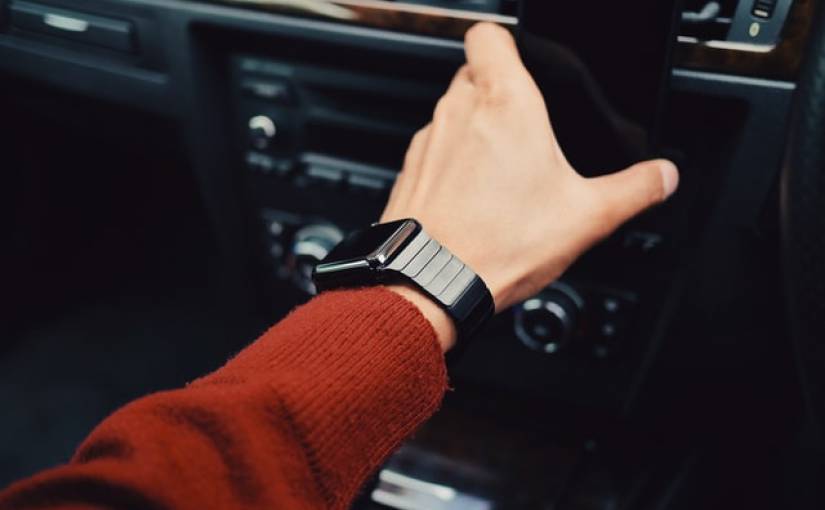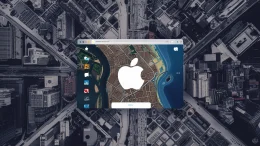Wearable technology; you either love it or hate it. As the name suggests, it refers to any smart devices that can be worn in one fashion or another. While the first picture that may pop up in our heads is that of a super-stylish smartwatch, wearable tech can also be fitted into clothing items and, in advanced cases, embedded into a user’s body.
Wearables are now at the forefront of the Internet of Things (IoT), an ecosystem of connected devices. Not only can we use them to communicate, but they can also store, manage, and relay important data. The focus for wearables has greatly shifted from consumer-oriented to more specialized applications.
The last decade has seen these devices come in many different shapes and sizes. Fitness freaks and individuals with health concerns seem to benefit from its health-tracking ability, while professionals with busy schedules find that their daily tasks are simplified.
Wearables do not just end with Fitbits and Apple Watches. The technology continues to flourish as companies strive to outcompete each other in producing the new “it” gadget. From e-skin sensors to smart swimsuits, every time we go online there seems to be a new cutting-edge wearable on the market.
Wearables, Reinvented
Wearables today are more than just monitoring heartbeats and tracking your fitness performance. Top players like Apple and Fitbit are upping the ante by adding advanced health-monitoring features that allow users to keep track of their wellness in real-time.
ResearchandMarkets.com in its Global Wearable Technology Market Growth, Trends and Forecasts Through 2019-2024 found that this appeals to older people—a target that is harder to reach when it comes to the latest tech innovations. The fall detection app and an EKG monitor featured in the Apple Watch Series 4, and sleep apnea detection function in the new Fitbits, are some of the additions that older users love.
Wearables and COVID-19
The industry is expanding and it is definitely experiencing a boom. The same report projected that “the wearable technology market will grow from $27 billion in 2019 to $64 billion in 2024, expanding at a compound annual growth rate (CAGR) of 19%”. This is prompted by many factors, including increased health awareness during COVID-19.
At the time of writing, the pandemic has infected over 34 million people and caused over 1 million fatalities worldwide, according to the World Health Organization. Can these devices really make a difference in flattening the pandemic curve and if so, why hasn’t it been done?
Ongoing COVID-19 Initiatives
It makes sense to utilize data collected using wearable devices to come up with an early prediction system. Through the magic of data science, healthcare providers can help predict potential outbreaks from users’ heart rates, amount of sleep, and the daily number of steps. Works are currently underway and here are some studies that we should keep an eye on:
Bluetooth Special Interest Group (SIG)
In August, the Bluetooth Special Interest Group (SIG) announced that it is working on a specification that will leverage the existing smartphone-based Exposure Notification System (ENS) as a response to the pandemic. The company said the technology will be extended to include wearables to “better address population groups where smartphone usage remains low, including children in primary school and older adults living in care facilities”. We can expect to see an initial draft within the next few months.
Scripps Research Translational Institute
In March, Scripps Research Translational Institute began a trial study called the Digital Engagement & Tracking for Early Control & Treatment, or DETECT, to identify small COVID-19 outbreaks before they spread, Fortune reported. By using data collected from thousands of volunteers who wear smartwatches and fitness trackers, the system can potentially eliminate the need for frequent testings, which are costly and time-consuming.
Fitbit
In May, Fitbit launched its own Fitbit COVID-19 Study which can be accessed through its app. The study aims to figure out algorithms that can detect outbreaks even before there are any symptoms. The target group is individuals over 21, living in the US or Canada, and who have contracted COVID-19 or experienced Flu-like symptoms. Fitbit users can find the questionnaire in the Assessments & Reports section of the Discovery tab.
Stanford Healthcare Innovation Labs
As of July, Stanford Healthcare Innovation Labs has had over 5,500 participants in its COVID-19 Wearables Study. According to the institute, its team was able to collect, analyze, and discuss some initial results within a few weeks and we can expect to see two papers published soon. Initial findings further confirm the importance of self-isolation in mitigating the pandemic. The institute is also working on improvements for its MyPHD app. Read the full report of Phase I here.
Germany’s Public Health Authority
In April, the Robert Koch Institute (RKI) launched the Corona Data Donation App, in partnership with health-focused startup Thryve. The app requires users to register their wearable fitness devices and volunteer information to collect health and fitness-related data. As of date, over 500,000 Germany residents have ‘donated’ their data. The country has been praised over its tactical approach to combating the pandemic and for keeping the numbers low.
Challenges Faced by Global Stakeholders
In spite of wearables’ potential as health trackers, stakeholders are still facing a few roadblocks in their attempts to build algorithms for an early warning system.
Unequal Access to Wearable Devices
This is probably one of the biggest problems—wearable devices are not accessible to everyone across the globe. Wearables were initially introduced as an extension of lifestyle devices, and they are still commercial items sold by businesses for profit.
Although the number of connected wearables has more than doubled in the space of three years—increasing from 325 million in 2016 to 722 million in 2019—these devices are still considered non-essentials and, therefore, only appeal to select groups of people.
Low Number of Participants
Dr. Eric Topol, a professor at Scripps Research, told Fortune that the low number of participants is one of the reasons developing a strong warning system nationwide is difficult.
“To do it well, we need pretty dense coverage, like hundreds of thousands to millions of participants,” he was quoted as saying, adding that a coordinated national effort is also instrumental in achieving success.
Skepticism Toward Data-Sharing
Meanwhile, Bloomberg reported that a huge number of Americans are still hesitant about health-tracking via wearables due to privacy concerns. Some others said that they are skeptical about sharing data with the government.
The news agency spoke to a volunteer contact tracer for Florida’s Larkin Community Hospital, Nasrin Sultana, who found that only 40% to 52% of the target group (those who tested positive for COVID-19 at the South Miami Hospital or have had close contact with those infected) would respond. “We can’t force them to participate or give us the information. It’s voluntary,” she reportedly said.
Data Security Concerns
Another issue that is affecting the effectiveness of such systems is security. Even Germany’s Corona Data Donation app is feared to be at risk of cyberthreats and cyberattacks. According to a Xinhua news report, Europe’s largest association of hackers, the Chaos Computer Club (CCC), has raised data security concerns following the app launch in April.
Although the CCC failed to access data collected in the app, it said in an analysis that, “The risks are not sustainable in the long term”. The association and the state authority then reportedly had “a constructive exchange about possible attack scenarios”.
Future of Wearables as a Response to COVID-19
In May, Harvard’s Edmond J. Safra Center for Ethics published the COVID-19 White Paper, outlining several concerns and measures that can be taken by global stakeholders to ensure that the use of wearables as a pandemic response is not being manipulated for unlawful gains.
It also pointed out “the lack of adequate legal framework and oversight, and the business model of dominant tech vendors predicated on commercial collection and trade of individual users’ data.”
The paper suggested that data should be kept decentralized and that there should be a mid-level entity that represents users or Mediating Institutions for Data (MIDs) to help challenge any unlawful or inappropriate uses of data.
“Wearables may complement or supplement widespread COVID-19 testing and immunity certificate models in the effort to promote safe reopening and ongoing pandemic response during subsequent waves.
“However, we have also highlighted the potential dangers of redeploying existing wearable technology without appropriate ethical, legal, or social safeguards for individuals’ rights and interests regarding their data.
“Indeed, the solutions we propose have implications beyond the COVID-19 setting and could strengthen the privacy protections in all domains where personal data is collected through digital means,” the report concluded.

















